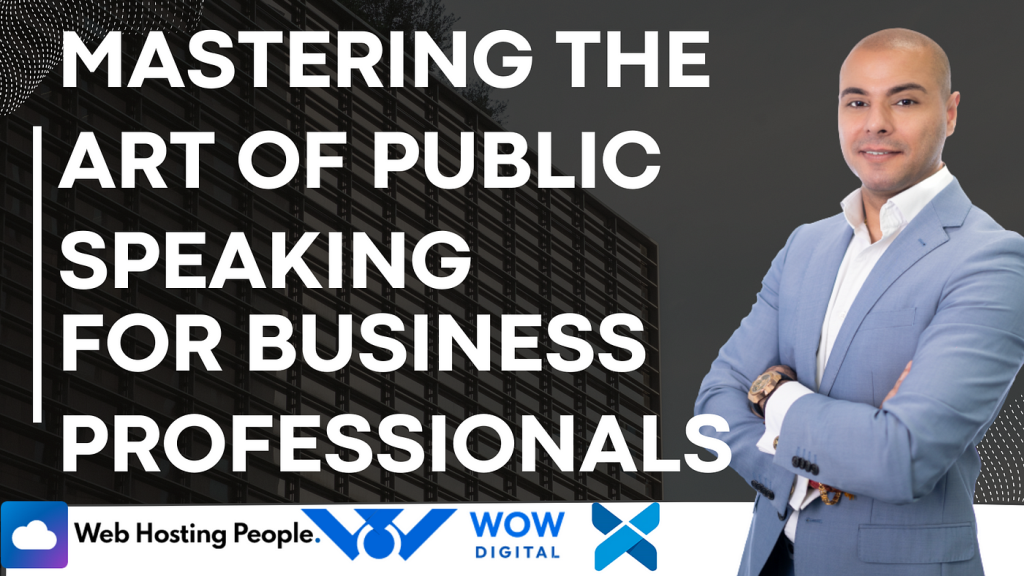Mastering the Art of Public Speaking for Business Presentations
Have you ever found yourself with sweaty palms and a racing heart just before you’re about to stand up and deliver a presentation to a room full of people? It doesn’t matter if you’re talking to a small team or a vast sea of faces; the mere thought of public speaking is enough to fill many of us with dread. But the ability to convey ideas clearly and effectively is crucial, especially in the business world, where it can be a game-changer for your career. The good news is that public speaking is an art, and like any art, it can be learned, practiced, and mastered.
Let’s break down the key elements that can transform you into a confident speaker who can command the attention of an audience during business presentations.
Know Your Stuff
The cornerstone of any good presentation is knowledge. Make sure you truly understand the topic you are talking about. If you’re well-prepared and know your material back to front, confidence will naturally follow. Do your homework, research thoroughly, and be ready to answer questions. Your audience will sense your expertise and pay more attention to what you’re saying.
Plan and Structure Your Presentation
A successful presentation has a clear outline with an introduction, body, and conclusion. Your audience will follow along better when there is a logical flow. Start by grabbing your audience’s attention—tell a story, share a shocking fact, or pose a compelling question. Then lay out the main points you’ll be covering. As you dive into the core of your presentation, make sure each point smoothly transitions to the next. Lastly, sum up the key takeaways and leave your audience with a strong closing thought or call to action.
Understand Your Audience
Who are you speaking to? Business executives? Peers? Potential clients? Knowing your audience is crucial as it guides the tone, language, and detail level of your presentation. Adapt your message to suit their interests and level of understanding. A pitch to potential investors, for example, will look quite different from an end-of-year company review. The more you can connect with your audience, the more compelling your presentation will be.
Engage Your Audience
A monotonous monologue will lose any audience. To keep things interesting, engage with your listeners. Ask questions, invite them to think, or include interactive elements where they can participate. Visual aids like slides or charts can support your words and provide a visual hook, but ensure they complement what you’re saying rather than distract.
Manage Your Nerves
It’s completely normal to feel nervous before a presentation, but those nerves can be harnessed to your advantage. Use that adrenaline rush to bring energy and enthusiasm to your delivery. Breathing exercises can also help. Take deep breaths before you start, and pause regularly to prevent rushing through your material. Remember, the audience is typically on your side—they want to see you do well.
Practice Makes Perfect
Practice. Then practice some more. Rehearse your presentation multiple times—first by yourself, then in front of a friend or colleague. You don’t have to memorize every word, but be familiar enough with your material that you’re not solely reliant on notes. During practice, pay attention to your pacing, tone, and body language, too.
Command the Room with Your Voice and Body Language
Your voice is a powerful tool in public speaking. Vary your pitch, tone, and speed to maintain interest. Emphasize important points and be mindful not to speak in a monotone. Practice clear diction so that everyone can understand you, and use pauses strategically to let important ideas sink in.
Similarly, body language can make or break a presentation. Stand up straight, make eye contact, and use gestures to emphasize points. Be conscious of any nervous habits, like fidgeting or pacing, as these can be distracting.
Handle Questions with Grace
Questions are a sign people are engaging with your presentation, so welcome them. Listen fully to the question, thank the person for asking, and if you know the answer, reply concisely and confidently. If you don’t know the answer, it’s okay to say so. Offer to find out and get back to the questioner, or turn the question over to the audience to see if someone else can provide an answer. This shows that you value participation and are honest and flexible.
Learn From Every Experience
Each presentation is a learning opportunity. Reflect on what went well and what could have been better. Solicit feedback from trusted colleagues or audience members. Always look for ways to improve, whether it’s refining your slides, working on your pacing, or finding more effective ways to engage your audience.
Conclusion

Remember, public speaking for business presentations isn’t about putting on a flawless one-person show. It’s about effectively communicating an idea, a service, a product, or a vision to your audience. As you master the art of public speaking, you’ll find it becomes less daunting and more of an opportunity to share your knowledge and passion.
The art of public speaking is like a muscle—the more you use it, the stronger it gets. So take every opportunity to practice your skills. Volunteer to lead meetings, offer to give presentations, speak at industry events. With preparation, understanding, and practice, you’ll transform public speaking from a nerve-wracking chore into a powerful skill that enhances your professional prowess.


